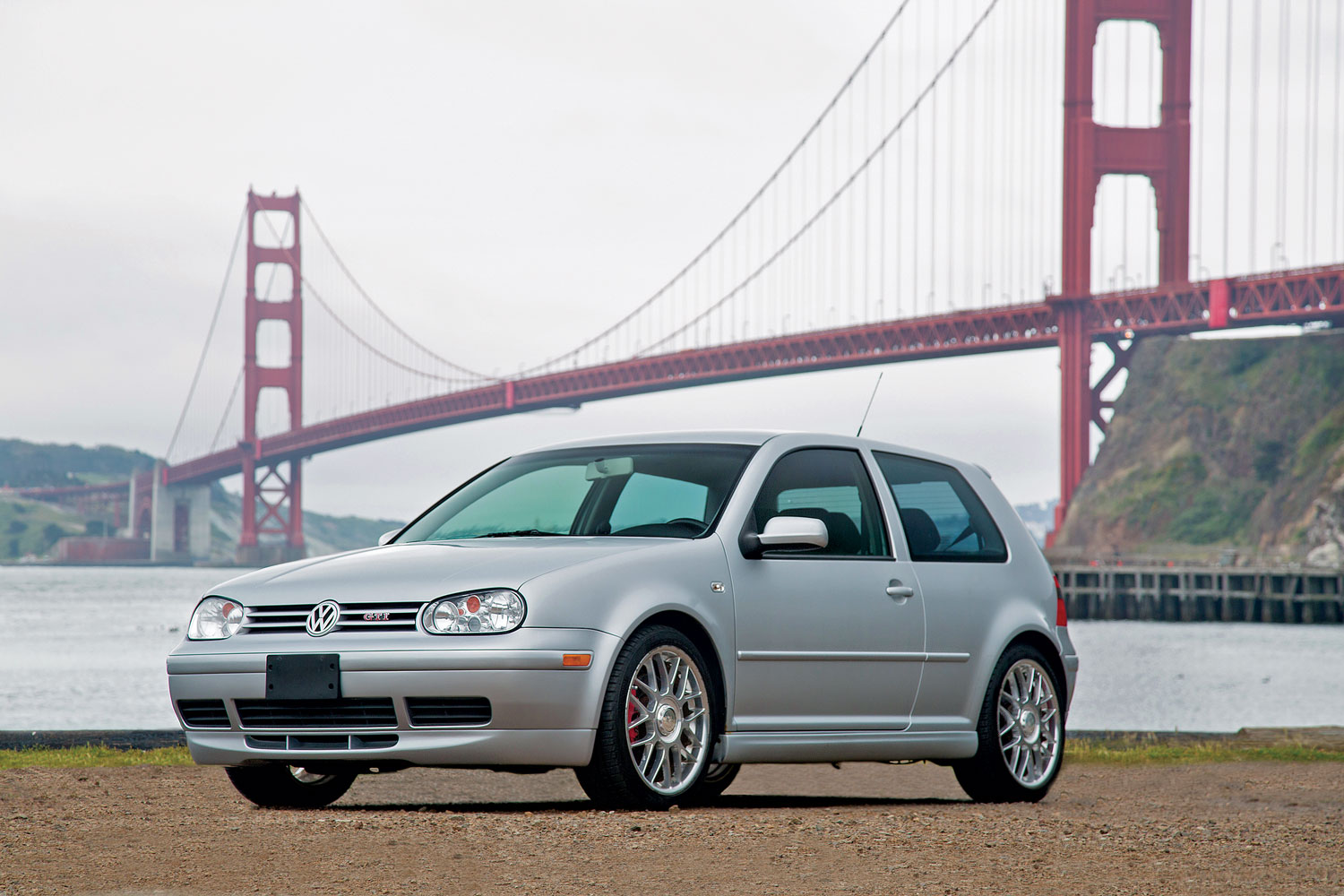
It’s official: Volkswagen will stop sales of its iconic hatchback, the Golf, in the American market this year. The Golf debuted in the United States as the econobox Rabbit in 1975 and has served as the base model for the higher-performance GTI since 1982. That the GTI and its even hotter platform-mate, the all-wheel-drive Golf R, will still carry on is significant, evidence that the driver’s cars are the true brand icons.
This one-two punch of VW hot hatches can be traced to the fourth-generation Golf GTI. It arrived in the U.S. in 1999 with a choice of two gas engines for its first year. A best-forgotten 2.0-liter 4-cylinder was “good” for only 115 horsepower. This was well off the pace of the top-of-the-line VR6, with its 2.8-liter narrow-angle V6 producing 174 horsepower.
The engine that earned the Mk4 GTI its reputation among drivers and tuners, however, was a 150-hp, 1.8-liter turbocharged 4 known as the 1.8T. It became available for the 2000 model year in the GTI GLS, which carried a base price of just $19,750. The engine’s broad torque curve and 1,750-rpm torque peak yielded excellent drivability. Equipped with a 5-speed manual transmission, the front-drive GTI 1.8T would hit 60 miles per hour in the low-to-mid-7s.
It got even better in 2002, when all 1.8T-powered GTIs were bumped to 180 horsepower. A 6-speed manual transmission and 18-inch wheels became available in that year’s 20th Anniversary Edition GTI. Had VW stopped there, we might still be suggesting snapping up a Mk4 GTI.
The one to get
The far more rare, desirable and collectible car, however, is the R32. It didn’t show up in the U.S. until 2004, the last model year of Mk4 production. VW sold only 5,017 of this special model in the U.S., while nearly 60,000 GTIs left dealer lots between 1999 and 2004. But it isn’t just the R32’s relative obscurity that makes it desirable today, as its hardware and performance made it the precursor to today’s Golf R.
The R32 fully banished the last of the Golf’s economy-car hardware in favor of legitimate go-fast engineering. For a starting price of $29,675, it featured a larger engine, a 6-speed manual transmission, bigger brakes and 18-inch wheels. More significantly, all-wheel drive was added and the GTI’s twist-beam rear axle was replaced with a multilink independent suspension. The R32 arrived with such scarcity that it was immediately aspirational for more than just VW fans.
More power and all-wheel drive
Under the hood was an improved version of the VR6 V6. Though the engine’s basic design (15.0-degree bank angle and a single cylinder head) remained, displacement increased to 3.2 liters. The head also sprouted another 12 valves, for a total of 24, increasing intake and exhaust flow and helping deliver 240 horsepower and 236 ft-lb of torque. Though a dual-clutch automatic transmission (dubbed “DSG” for Direct Shift Gearbox) was sold in other markets, American R32s came only with a 6-speed manual.
The Golf was always known for delivering a better-than-average interior and driving experience in the economy-car ranks, and that overachieving ethos extended into the upscale R32. Though it was often compared to all-wheel-drive contemporaries like the Subaru WRX STi and Mitsubishi Lancer Evolution, the R32 was a much more pleasant place to spend time, feeling much like a baby Audi.
The R32 was aimed at a more-mature market, drivers who would happily sacrifice a bit of performance in the interest of not suffering abuse to their kidneys or elsewhere. Hitting 60 mph in about six seconds flat made the R32 a second or so slower than those hooligan rally cars. With an iron-block V6 hung over the front axle, it was fairly nose heavy, and that showed at the limit, where it was prone to understeer.
Still, the R32 didn’t sound like it had escaped from a “Fast and Furious” movie thanks to a dual exhaust that burbled at low revs but then grew into an adult-approved high-rpm shriek.
Available and reasonable
One advantage the R32 offers over its Japanese counterparts is that most owners appear to know what they have and respect it, so finding an unmolested one isn’t terribly difficult. And being a car often driven by adults, it’s probably less likely to have been abused, though your mileage may vary.
Despite their relative rarity, R32s still change hands regularly today with a typical transaction price between $15,000 and $20,000 in online auctions. A high sales price of $62,000 for an 1,800-mile, as-new example on Bring a Trailer in September 2020 should be seen as encouragement for the model’s potential. ♦